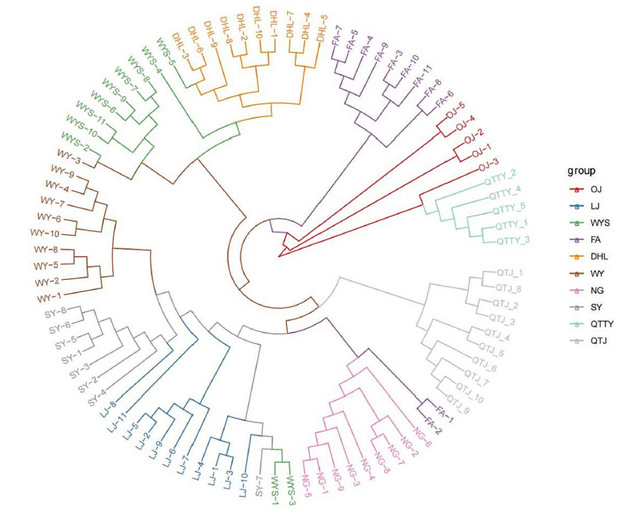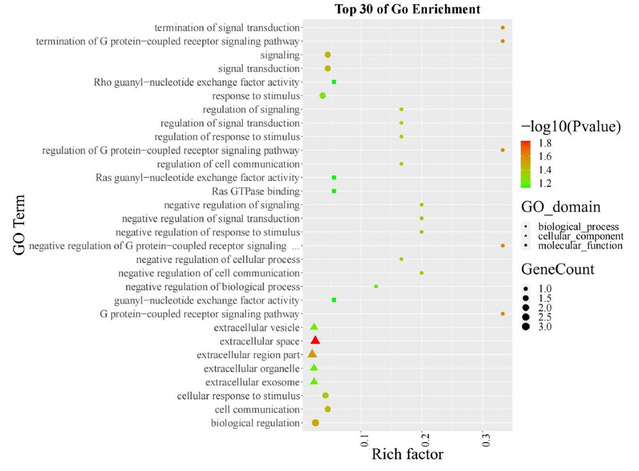Recently, Professor Liu Qigen’s Team have published two papers on Aquaculture and Animals, respectively. So far, the Team has made significant progress in research on the origin of Qingtian Rice Field Carp and the evolutionary mechanism underlying its adaptability to rice fields.
Qingtian Rice Field Carp is one of the core elements of the first Globally Important Agricultural Heritage Systems (GIAHS) conservation project recognized by the FAO in China. However, when it comes to its origin, there has been no final conclusion or direct evidence. Some believed that it was brought in by the ancestors of local people when they moved here from northern Zhejiang, or by the She nationality when they moved north from the Wuyi Mountains of Fujian Province. Others argued that it was directly domesticated from local wild Oujiang Color Common Carp. In addition, there is still a lack of research on the possibility of Qingtian Rice Field Carp being homologous with Wuyi Mountains Rice Field Carp, the changes brought by artificial domestication to rice field carps, etc. To solve the mystery, funded by the General Project of the National Natural Science Foundation of China and the capacity-building project of the Science and Technology Commission of Shanghai Municipality (STCSM) and supported by the Bureau of Agriculture and Rural Affairs of Qingtian County, Zhejiang Province, the Team collected wild carp from the Yangtze River and the Qiantang River water systems in northern Zhejiang, as well as wild and rice field carp from the Oujiang River and its adjacent water systems (where Qingtian Rice Field Carp lives) and the Wuyi Mountains of Fujian Province. The phylogenetic relationships of Qingtian Rice Field Carp and Wuyi Mountains Rice Field Carp with all the wild carps from the above regions were analyzed using a simplified genomic technology, which clearly revealed the fact that Qingtian Rice Field Carp was domesticated from wild Oujiang Color Common Carp (Fig. 1). This study also made clear that Qingtian Rice Field Carp and Wuyi Mountains Rice Field Carp were domesticated from the wild carps of their habitats, respectively. In this way, this study not only clarified the parallel phylogenetics between them, but also provided direct evidence for the origin of rice field aquaculture in multiple regions in China (Fig. 2). The analysis of selection features indicated that, compared with wild carps, both Qingtian Rice Field Carp and Wuyi Mountains Rice Field Carp showed a high enrichment of genes related to signal transduction (Fig. 3), thus providing a basis for further study on whether the enrichment of these genes is related to the adaptability of these fish to the shallow water environment of rice fields.

Fig.1 Analysis of phylogenetic relationships between different carps using a simplified genomic technology

Fig. 2 Structural analysis of different carp populations

Fig.3 GO enrichment analysis of selective gene in rice fields
In addition, there is a significant difference between this culture modes and other popular integrated rice-fish culture modes in China (such as rice-shrimp, rice-crab, and rice-turtle modes). That is, Qingtian Rice Field Carp can adapt very well to the shallow water environment of rice fields, saving the trouble of digging special “fish ditches” or “fish pits” in rice fields under the rice-Qingtian Rice Field Carp symbiotic system and thus avoiding the competition between “rice” and “aquatic products” from the source. However, it is difficult to arrange oxygenation facilities in rice fields without ditches or pits, which often have a low dissolved oxygen level, not to mention the high water temperature (as high as 40°C) in the summer. These factors combine to create an extremely unfavorable environment for many aquatic animals, Qingtian Rice Field Carp can well adapt to such environment. To understand how Qingtian Rice Field Carp adapts to low-oxygen and high-temperature environments, Professor Liu Qigen’s Team performed transcriptomic analysis, and identified a large number of genes and molecular markers associated with the adaptive regulation of Qingtian Rice Field Carp to low-oxygen and high-temperature environments. These results not only laid a solid foundation for further elucidating the adaptability of Qingtian Rice Field Carp to the unfavorable shallow water environment of rice fields and the underlying mechanism, but also provided an essential basis for further breeding high stress-resistant rice field carp varieties adaptable to rice field environments.
So far, the Team has published five papers on the rice-Qingtian Rice Field Carp symbolic system on journals such as Aquaculture, Frontiers in Physiology, and Animals, and more papers are currently under collation and writing. Professor Liu Qigen’s doctoral candidates Hu Wenjing and Qi Ming, master candidate Gao Yang, and research assistant Jiang Yuhan are the first authors of these papers, respectively. Professor Liu Qigen and Dr. Sun Jiamin are the corresponding authors.